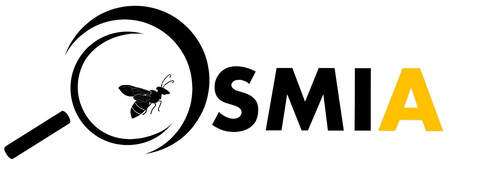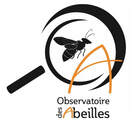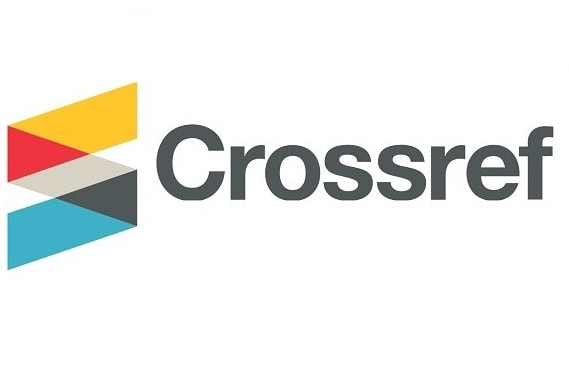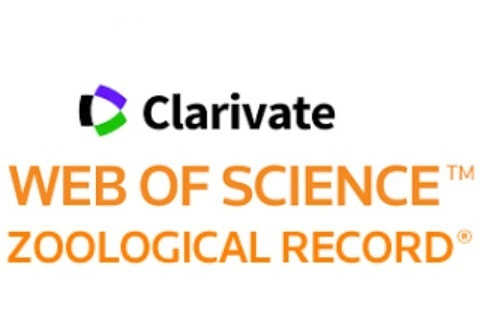Revue d'Hyménoptérologie
Journal of Hymenopterology
ISSN 2727-3806
ARTICLE |
Notes sur la nidification spontanée de reines sauvages de bourdons en Belgique (Hymenoptera : Apidae)
|
Kimberly Przybyla, Denis Michez, Pierre Rasmont, Jean Habay
|
Citation
Przybyla, K., D. Michez, P. Rasmont & J. Habay (2023). Notes sur la nidification spontanée de reines sauvages de bourdons en Belgique (Hymenoptera : Apidae). Osmia, 11: 59–64. https://doi.org/10.47446/OSMIA11.9
Received 20 December 2022 - Accepted 18 December 2023 - Published (online) 19 December 2023
Indexation • Archivage - Archiving
- DOI: https://doi.org/10.47446/OSMIA11.9
- Zoobank (ICZN): https://zoobank.org/1C6EC01B-73FA-4D80-8CB3-D4F4CA10CA54
- HAL (CNRS-INRAE): https://hal.science/hal-04354375
- Zenodo (CERN): https://zenodo.org/records/10407147
Résumé
Dans le cadre de nos études sur le développement de méthode d’élevage de différentes espèces sauvages de bourdons, nous avons expérimenté une technique de nidification spontanée de reines sauvages. Nos dispositifs de nids d’appel, qui contiennent de la litière de souris comme substrat, permettent d’attirer des reines de bourdons sauvages en recherche d’un nid et d’amorcer la construction du couvain. Sur un total de quatre années d’observation, nous avons installé 57 nids d’appel avec un taux de réussite de 44 % d’amorçage. Cependant, cette méthode présente quelques limitations et n’est pas adaptée pour les espèces de bourdons nichant dans le sol.
Mots-clefs
Élevage, espèces sauvages, méthode de nidification
Title (translation)
Notes about spontaneous nesting of bumblebees’ queens in Belgium (Hymenoptera: Apidae)
Abstract
To develop a rearing system for different wild bumblebee species, we experimented techniques for spontaneous nesting of wild queens. Our nest devices, which contain mouse litter as substrate, are used to attract wild bumblebee queens in search of a nest and to initiate brood construction. Over a total of four years of observation, we have installed 57 call nests with a 44 % success rate of nest initiation. However, this method has some limitations and does not show satisfactory results for ground-nesting bumblebee species.
Keywords
Breeding, wild species, nesting method
Références
- Alford, D. V. (1975). Bumblebees. Davis-Poynter, London, 352 pp.
- Bucánková, A. & V. Ptácek (2012). A test of Bombus terrestris cocoon and other common methods for nest initiation in B. lapidarius and B. hortorum. Journal of Apicultural Science, 56(2): 37–47. https://doi.org/10.2478/v10289-012-0022-x
- Crowther, L. P., P. L. Hein & A. F. Bourke (2014). Habitat and forage associations of a naturally colonising insect pollinator, the tree bumblebee Bombus hypnorum. PloS One, 9(9): e107568. https://doi.org/10.1371/journal.pone.0107568
- Djegham, Y., P. Rasmont, F. Rozenfeld & J. C. L. Verhaeghe (1994). Is Bombus terrestris (L.) colony foundation facilitated by the presence of vole (Microtus arvalis (Pallas)) litter? p. 411. In: A. Lenoir, G. Arnold M. Lepage (ed.). Les Insectes sociaux. 12th Congress of the International Union for the Study of social Insectes IUSSI. Paris-Sorbonne, 21–27 August 1994. Publications de l’Université de Paris-Nord, Paris, 583 pp. http://www.atlashymenoptera.net/biblio/00500/062_1994_Djegham_et_al_Bombus_terrestris_foundation_with_Microtus_arvalis.PDF [accessed 10 December 2023]
- Doussot, C., O. J. N. Bertrand & M. Egelhaaf (2020). Visually guided homing of bumblebees in ambiguous situations: A behavioural and modelling study. PLoS Computational Biology, 16(10): e1008272. https://doi.org/10.1371/journal.pcbi.1008272
- Eijnde, J. van den, A. de Ruijter & J. van der Steen (1990). Method for rearing Bombus terrestris continuously and the production of bumblebee colonies for pollination purposes. VI International Symposium on Pollination. ISHS Acta Horticulturae, 288: 154–158. https://doi.org/10.17660/ActaHortic.1991.288.20
- Folschweiller, M., B. Hubert, G. Rey, Y. Barbier, J. D’Haeseleer, M. Drossart, G. Lemoine, W. Proesmans, J.-S. Rousseau-Piot, C. Vanappelghem, S. Vray & P. Rasmont (2020). Atlas des bourdons de Belgique et du nord de la France. 151 pp. http://sapoll.eu/atlas-des-bourdons-de-belgique-et-du-nord-de-la-france [accessed 10 December 2023]
- Harder, L. D. (1986). Influences on the density and dispersion of bumble bee nests (Hymenoptera: Apidae). Ecography, 9(2): 99–103. https://doi.org/10.1111/j.1600-0587.1986.tb01196.x
- Holm, S. (1960). Experiments on the domestication of bumblebees (Bombus Latr.) in particular B. lapidarius L. and B. terrestris L. Copenhagen: Royal Veterinary and Agriculture College, Yearbook 1960: 1–19.
- Lhomme, P., A. Sramkova, K. Kreuter, T. Lecocq, P. Rasmont & M. Ayasse (2013). A method for year-round rearing of cuckoo bumblebees (Hymenoptera: Apoidea: Bombus subgenus Psithyrus). Annales de la Société entomologique de France (N.S.), 49(1): 117–125. https://doi.org/10.1080/00379271.2013.774949
- Lye, G. C., J. L. Osborne, K. J. Park & D. Goulson (2012). Using citizen science to monitor Bombus populations in the UK: nesting ecology and relative abundance in the urban environment. Journal of Insect Conservation, 16(5): 697–707. https://doi.org/10.1007/s10841-011-9450-3
- Martinet, B., S. Dellicour, G. Ghisbain, K. Przybyla, E. Zambra, T. Lecocq, M. Boustani, R. Baghirov, D. Michez & P. Rasmont (2021). Global effects of extreme temperatures on wild bumblebees. Conservation Biology, 35(5): 1507–1518. https://doi.org/10.1111/cobi.13685
- Mcfrederick, Q. S. & G. Lebuhn (2006). Are urban parks refuges for bumblebees Bombus spp. (Hymenoptera: Apidae)? Biological Conservation, 129: 372–382. https://doi.org/10.1016/j.biocon.2005.11.004
- Orlow, M. von (2015). Hôtels à insectes. Abeilles sauvages, bourdons et Cie au jardin. Ulmer, Paris, 192 pp.
- Sakagami, S. F. (1976). Specific differences in the bionomic characters of bumblebees: A Comparative Review. Journal of the Faculty of Science Hokkaido University Series IV. Zoology, 20(3): 390–447. http://hdl.handle.net/2115/27617
- Sladen, F. W. L. (1912). How pollen is collected by the honey-bee. Nature, 88(2209): 586–587. https://doi.org/10.1038/088586b0
- Vanderplanck, M., R. Moerman, P. Rasmont, G. Lognay, B. Wathelet, R. Wattiez & D. Michez (2014). How does pollen chemistry impact development and feeding behaviour of polylectic bees? PloS One, 9(1): e86209. https://doi.org/10.1371/journal.pone.0086209
- Varner, E., K. Mark, H. Jackson, K. Singleton, L. Luo, S. Johnson, R. Gries & G. Gries (2023). Rodent odour bait: A new bumble bee conservation tool to enhance nest box occupancy. Insect Conservation and Diversity, 16(3): 324–334. https://doi.org/10.1111/icad.12627
- Vray, S., O. Rollin, P. Rasmont, M. Dufrêne, D. Michez & N. Dendoncker (2019). A century of local changes in bumblebee communities and landscape composition in Belgium. Journal of Insect Conservation, 23(3): 489–501. https://doi.org/10.1007/s10841-019-00139-9
- Wood, T. J., D. Michez, R. J. Paxton, M. Drossart, P. Neumann, M. Gérard, M. Vanderplanck, A. Barraud, B. Martinet, N. Leclercq & N. J. Vereecken (2020). Managed honey bees as a radar for wild bee decline? Apidologie, 51(6): 1100–1116. https://doi.org/10.1007/s13592-020-00788-9
- Yoon, H. J., S. E. Kim & Y. S. Kim (2002). Temperature and humidity favorable for colony development of the indoor-reared bumblebee, Bombus ignitus. Applied Entomology and Zoology, 37(3): 419–423. https://doi.org/10.1303/aez.2002.419










